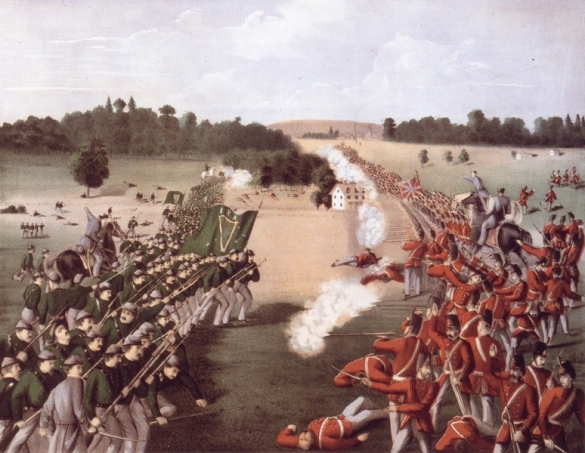Irish Invasion of Canada
Posted by Groomporter on Oct 7th 2017
The Irish Invasion of Canada
The Battle of Ridgeway took place in June of 1866 when between 600 and 800 Irish Fenians living in the United States took it upon themselves to declare war on the British Empire. The Fenian Brotherhood based in New York City was hoping to support efforts in to force the United Kingdom to allow the formation of an independent Irish Republic.

While the Fenians in the UK had been infiltrated by spies and informants, knowledge about their American branch was lacking, and the Canadians were unaware of the size of the problem. They are described as having been a ragtag army, partially recruited from the unemployed, but many of them were actually experienced veterans who had fought for the Union Army in the American Civil War including experienced officers, infantrymen, sappers, gunners and other military tradesmen.
The Fenians, in their revolutionary fervor, apparently naively believed that portions of the Canadian population, the poor, the Catholics, the French-speakers, would rally to their cause against their imperial oppressors. The plan was to temporarily hold Canada, or at least portions of it, hostage in the hope of causing a political crisis in London. By the time the Fenian army had assembled authorities on both sides of the border were aware of the problem, but could not determine the location of the planned invasion.
Before dawn on June 1 1866, former Union cavalry commander Brigadier General John O'Neill lead 800 troops across the Niagara River above Fort Erie. Another 200 made the crossing later in the morning before a U.S. Navy gunboat arrived on the scene to block the barges hauling the remaining Fenian troops on the U.S. side of the river. For some reason U.S. authorities allowed unarmed men to board the ferry from Buffalo, NY and small boats freely crossed the Niagara River until the afternoon. It is estimated that something between 1,000 and 1,350 Fenians crossed during the first thirteen hours of June 1.
A Fenian green flag with a gold Irish harp was raised about two hours in advance of the main force, and an advance party rushed to seize the town of Fort Erie, cutting telegraph wires and taking control of the railway yards as the rest of O'Neill's force was disembarking. The Fenians not only failed to recruit any help from the local Canadian population, their forces were hemorrhaging from desertions and the army was down to about 650 men by morning.
The Fenian troops had night marched to take a defensive position on a Limestone Ridge near the town of Ridgeway and were met by a combined force of about 850 Canadian militia made up of the Queen’s Own Rifles of Toronto and the 13th Battalion of Hamilton commanded by Lieutenant Colonel Alfred Booker. Initially the Fenians began to be pushed back, but an hour or so into the battle things changed. The Canadian troops reformed themselves into a square to defend against a cavalry attack. It is speculated that the sight of mounted Fenian scouts were mistaken for the advance of a cavalry unit. Although the order to form square was quickly countermanded, it exposed had the inexperienced Canadian troops to heavy fire from the Fenians, forcing the unit to pull back so they could reform their ranks to continue the fight. It's said that some of the troops may have mistaken the withdrawal for a retreat, causing chaos in the Canadian troops. The Fenian commander saw his opportunity in the confusion and ordered a bayonet charge, routing the Canadian troops, and allowing the Fenians to capture the town of Ridgway. However, fearing a counter-attack by British reinforcements the retreated back to Fort Erie where they were met with a small, but fierce group of defenders. The Fenians were able to take the town again, but with an estimated 5,000 British regulars and Canadian militia converging on his position, and a U.S. naval detachment now blocking any reinforcements, O'Neill's Fenians retreat back to New York State. About 850 in number, crossed in a body and surrendered to a U.S. naval party from the USS Michigan near Buffalo.
With the large population of Irish along the border the invasion threat continued for a few years. In 1867, Buffalo reportedly had the largest Fenian arms depot in the country with 4,000 Springfield rifles and 500,000 cartridges. (In fact, there was another failed invasion was launched an attack from Vermont as late as 1870.) As a result, the U.S. government used the Fenain Brotherhood as a poker chip in certain negotiations with London. But eventually President Andrew Johnson was forced to use U.S. troops to round up 7000 Fenians from the city of Buffalo in July 1867 and disperse them at public expense.
For a time in Canada the term Fenian was applied to Irish Catholics in general (in a way that we still hear today about certain groups). The Stratford Beacon observed: “With some narrow-minded people the idea appears to prevail that if a person is a Catholic, he must necessarily be a Fenian”.
